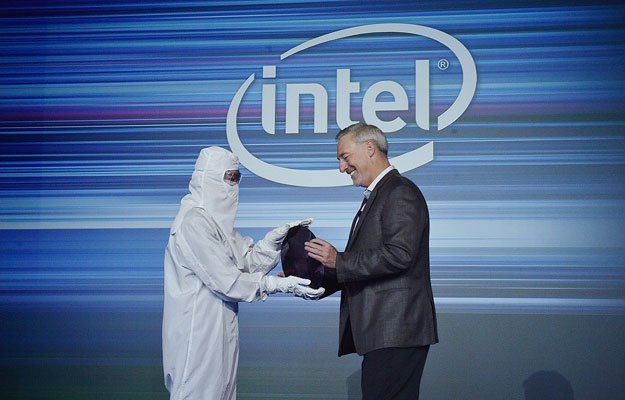Intel Announces Multi-Year Mission To Boost Chip Capacity, Push To 7nm And Beyond

Today, things are definitely coming into "focus" as Intel senior vice president and general manager of Manufacturing and Operations Dr. Ann B. Kelleher says that the company is kicking off an extensive expansion campaign across the globe. The first priority for Intel at this time is boosting capacity for its 14nm product line, which brings us to Fab 42.
Construction on Fab 42 initially began in 2011 in Chandler, Arizona. It was mostly finished by 2014, but Intel put the brakes on bringing the facility online as PC sales began to nosedive. However, the company announced early last year that it was investing $7 billion into completing construction and Kelleher announced today that Intel has "made good progress on the previously announced schedule for Fab 42 fit-out in Arizona."

Once fully operational, Fab 42 will be capable of producing 22nm, 14nm and future 7nm products.
In addition, Intel will use its New Mexico facilities to develop its next-generation storage and memory technologies, and that it is in the initial planning stages of fab expansions in Oregon, Ireland, and Israel. Construction on these fab expansions will begin in 2019, and likely won't be complete until early in the next decade.
While Intel relies heavily on its own extensive fab operations, the company is not averse to relying on outside foundries given the right conditions. "We will continue our selective use of foundries for certain technologies where it makes sense for the business," Kelleher added. "As we invent more products for a broader set of customers, you can expect us to be strategic about the application of Intel’s differentiated manufacturing capability and the selective use of foundries."

Looking forward, Intel is hoping that these updates to its fab and added capacity will help fend off shortages in the future and help it to fully address the [estimated] $300 billion market for silicon. After all, Intel has diversified itself over the years from a mostly PC-centric company to one that dominates the server market (96+ percent market share) and even produces cellular modems that go into popular products like Apple's iPhones. When you couple that with the company's SSD/3D XPoint products and even upcoming discrete GPUs, it's easy to see why Intel wants to be sure that "the beast" is fed without any interruptions.

